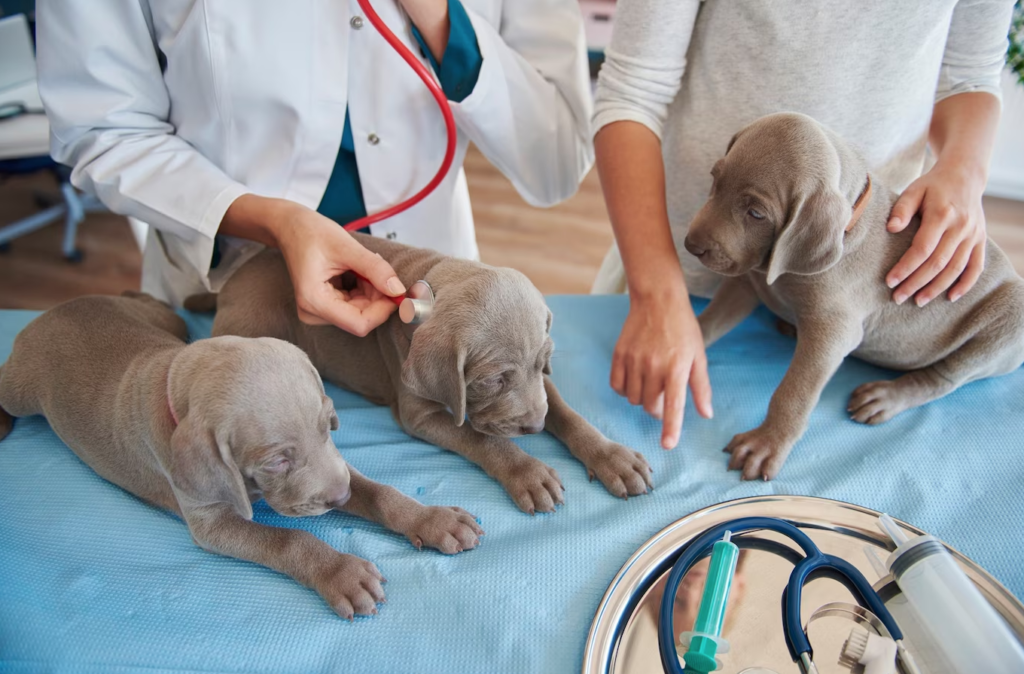Your veterinarian may seek the assistance of a veterinary ophthalmologist if your pet has a condition affecting its eyes. After consultation, an ophthalmologist might then examine your pet and perform any complex procedures involving the eye. Veterinary ophthalmologists are specialists that typically only treat animals referred to them by another veterinarian. A veterinary ophthalmologist then works with the referring veterinarian to find the most effective way to help your pet.


Veterinary ophthalmologists train for a minimum of 4 years in an internship and residency after completing veterinary school and obtaining their Doctorate in Veterinary Medicine (DVM). At the completion of training, they must then complete a rigorous set of certifying examinations administered by the American College of Veterinary Ophthalmologists (ACVO). Those passing the exams become Diplomates of the ACVO (DACVO) and are licensed to practice as veterinary ophthalmologists. Diplomates of the ACVO continually improve their skills through continuing education programs, by attending conferences, by presenting research in scholarly journals, and by training the next generation of interns and residents interested in ophthalmology. Veterinary ophthalmologists must keep up with the progressive changes in their profession.
A “scratch” upon the clear window (cornea) of the eye. If an ulceration fails to heal, or the eye becomes infected, then repair may need the expertise of a veterinary ophthalmologist.
A clouding of the lens that prevents vision. There are no medical therapies known to effectively clear lenses, but a veterinary ophthalmologist can surgically remove and replace a damaged lens to restore vision.
Trauma to the eye that may require surgical or medical intervention.
An elevation of pressure within the eye causing pain and blindness. Veterinary ophthalmologists have a variety of medical and surgical techniques to alleviate the pressure.
A deficiency in the tear film protecting the eye that can lead to blindness, pain, and corneal ulcerations. Production of an appropriate tear film can often be accomplished medically, and in rare cases surgery may be indicated.
A protrusion of the gland of the third eyelid. This debilitating condition can often be surgically corrected to preserve the tear film and the health of an eye.
An eyelid that turns inwards and rubs across the cornea causing irritation, pain, and even ulceration. Surgical intervention can often correct this.
Necrotic tissue associated mainly with feline eyes, and rarely in dogs and horses. The offending tissue can be surgically removed to prevent further necrosis (tissue death) and alleviate pain.
An inherited genetic condition where the retina slowly dies reducing vision even to the point of blindness.
A condition in which retinal tissue dies abruptly caused by a variety of poorly characterized diseases.
A recurrent viral infection causing painful conjunctivitis and corneal ulcerations. There are antiviral medications to treat these infections.
Painful inflammation within an eye resulting from an infection, formation of a tumor, or due to an autoimmune disorder. There are medical and surgical treatments to minimize damage to the eye.
An eye projecting outward from its socket typically following a traumatic event. A proptosed eye can often be successfully surgically returned to its normal position.
Many abnormal growths of tissue are associated with eyes and especially with the margins of eyelids. Most of these masses are benign, but malignant ones require surgical removal to prevent their further growth or metastasis.
An autoimmune disease of dogs, especially German Shepherds, that requires lifelong therapy to prevent blindness.
An abnormal growth of eyelashes along or under the eyelid causing pain and corneal ulceration. Veterinary ophthalmologists have a variety of techniques to remove the offending hairs.
